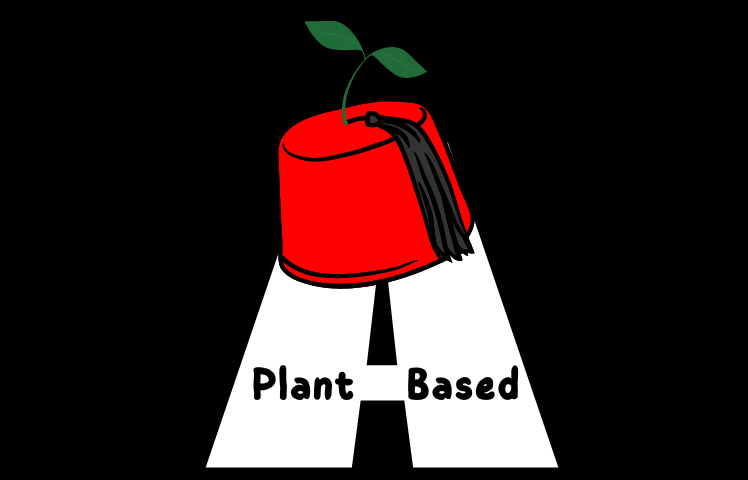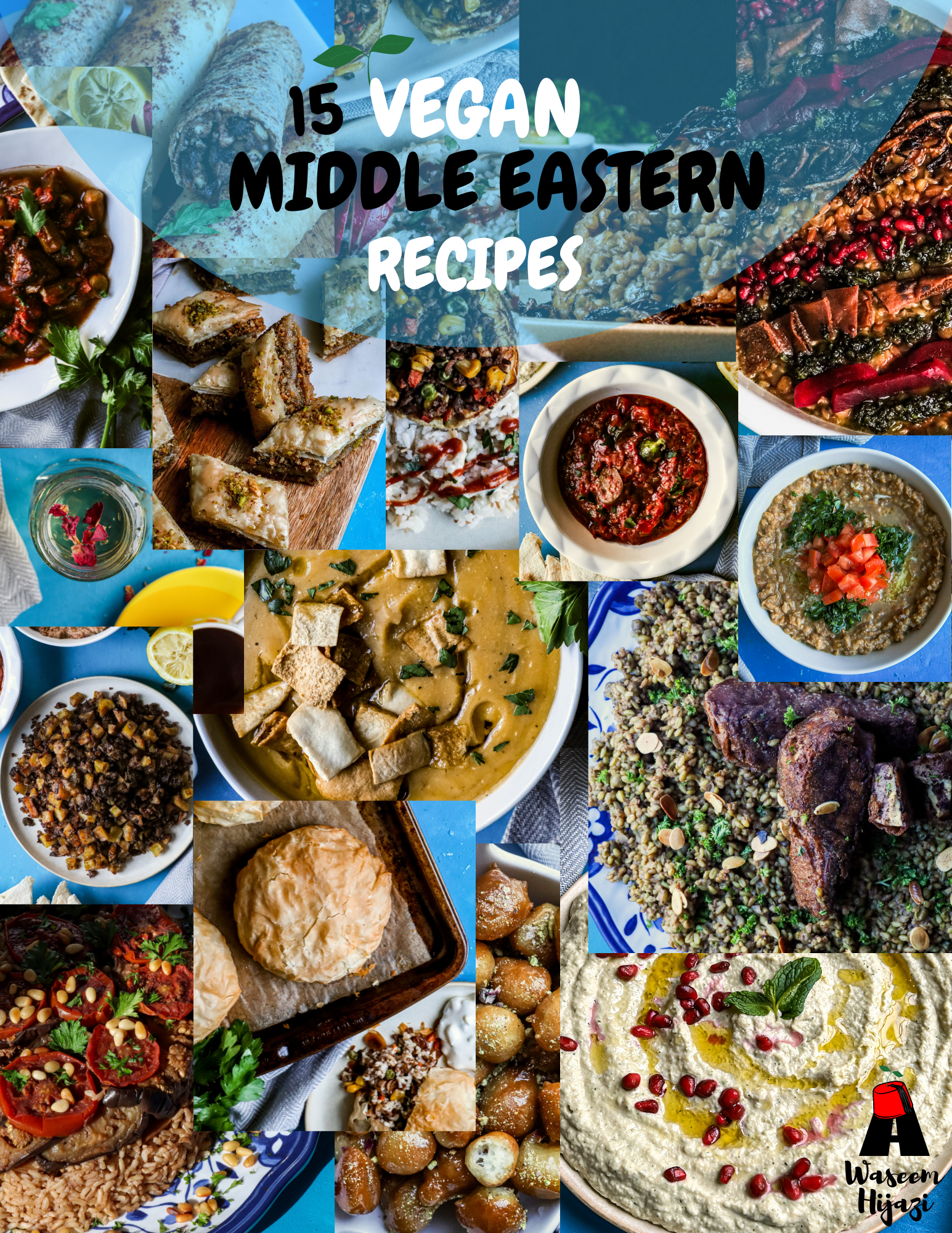These Yalanji stuffed squash and cabbage rolls are a fun spin on the traditional refreshing cold appetizer. Made with a tangy rice and vegetable filling. Perfect to enjoy over a food party!

About The Recipe
- Same old Yalanji flavours, enjoyed in different ways. A twist on the beloved grape leaves, these Yalanji stuffed squash and cabbage rolls are just as good!
- Fun for a food party! Switch it up and stuff the yalanji filling into different vegetables (like zucchini, eggplants, cabbage, grape leaves, and more). A fun way to share for a food party.
- A great way to sneak veggies into delicious foods. They’re stuffed with fresh vegetables and herbs, dressed in a flavourful sauce, and you won’t know this dish is naturally vegan.
Video Tutorial
Watch this quick video for the full tutorial on how to make Yalanji here:
What Is Yalanji?
Yalanji is popularly known as the vegetarian stuffed grape leaves. They’re a spin off on the original grape leaves, made with a meaty rice filling (called Yabrak). The Yalanji on the other hand, is made of a tangy vegetable rice filling. Loaded with zesty refreshing flavours from parsley and mint, lemon and pomegranate molasses, and freshly chopped vegetables.

This Yalanji stuffed squash and cabbage rolls recipe is a twist on the traditional grape leaves. Using the classic tangy Yalanji filling to stuff in other vegetables, like Kousa and Malfouf (Zucchini/Squash, and Cabbage Rolls).
Check out our original Yalanji recipe using stuffed grape leaves.

Ingredients You’ll Need
Yalanji Filling Ingredients
The Yalanji filling is made of finely chopped vegetables and herbs, mixed with rice, and flavoured with a zesty tangy sauce to marinate in.
- Rice: Short grain rice (like Jasmine rice or Egyptian rice) works best. Make sure to wash thoroughly until water runs clear. Soak it first before starting to prep the rest of the ingredients.
- Tomatoes: Use fresh firm tomatoes. Any type will work. I use Roma tomatoes, as they’re the most affordable around here.
- Green Onions: Snip off the root end, and use the rest of the stalk. Regular white onions (or sweet onions) can also be used instead in this recipe.
- Parsley: I prefer curly parsley for added texture. Flat parsley also works.
- Mint: Fresh or dried mint works well in this recipe. If using dried mint, a little goes a long way.
- Lemon: Freshly squeezed lemon juice for best results. Bottle will work if necessary.
- Pomegranate Molasses: This ingredient is essential to bring out the classic Yalanji flavour. Adjust the amount based on desired tang.
- Extra Virgin Olive Oil: Use good quality olive oil. Do not try another oil instead, as the entire flavour of the dish will change.
- Sumac: It’s optional. But great for added tang. Find Sumac at your local Arab/Middle Eastern grocery store.

Zucchini & Cabbage
This recipe is made to bring you two different ways to stuff the traditional tangy Yalanji filling (aside from the popular grape leaves). Feel free to double up either one of those vegetables (Kousa or Malfouf), or check out the original Yalanji Grape Leaves recipe.
- Kousa: The Arabic name for the zucchini, or Mexican squash. It’s the small and wide grey/white zucchini. Perfect to stuff with many different rice fillings.
- Malfouf: That’s Arabic for cabbage. Use white cabbage (aka green cabbage), with the light green shade. They work best to stuff with the filling, instead of the crinkly leafy cabbage.


Making The Yalanji Filling
Start by preparing the rice. Wash thoroughly until water runs clear. Soak in cold water for 30 minutes while you work on the rest of the Yalanji filling ingredients. Drain it out and place in a bowl.
Make the sauce. To speed things up and make it convenient, use a food processor to blend up all the Yalanji ingredients (except the rice). Or finely chop the vegetables and herbs into equal small size by hand, then mix up the remaining ingredients in a bowl.

Combine the drained rice with the sauce in a large bowl. Make sure to cover all the rice, pushing it down under the sauce with the back of a spoon. Soak for 30 minutes.

Strain out the liquids into two separate bowls. Drain by sitting in a strainer in a bowl until most liquid is pressed out, saving it for later. Empty the rice mixture into a separate bowl.

Find a detailed recipe post for the Yalanji filling here.
How To Core And Stuff Zucchini
Prepare the zucchini. Pick out small size (Mexican Squash/White Zucchini/Grey Squash) that’s smaller than the length of your corer blade. Wash and dry. Snip off both ends of each zucchini (don’t cut too much).

Core out the insides. Hold the zucchini with the palm facing upwards. Gently stab the top with a corer,
as close to the skin as possible. Only go in a little, then remove the corer and repeat around the
circle. Carefully push down deeper toward the end, and rotate both hands in opposite direction
to meet the other side of the pulp. It should come out easily. Use the sharp bladed side of the corer to gently scrape off the insides. Repeat the same process of rotating until the insides are nice and clean.

Stuff the zucchini. Sprinkle the rice filling into each zucchini, without overstuffing it. Tap the bottom to fill in the gaps. Leave some space at the top (about 1/2 inch) to allow the rice to expand when cooked. Set aside until ready to cook.



Check out a step-by-step tutorial for how to core Kousa here.
How To Blanch And Roll Cabbage Leaves
Prepare the cabbage. Wash and dry the cabbage. Cut off the core using a knife, going in at a slight angle to help pop out.

Blanch the cabbage. Carefully drop it into a pot of boiling water. Use silicon tongs to handle. Separate the leaves as they will quickly start to soften. Pull them out one at a time, blanching for an additional minute before removing into a plate to cool down. Stick a fork in the centre of the core to help hold the cabbage in place. Set aside on a clean flat surface to cool down.

Stuff and roll the leaves. Once the leaves are cool enough to handle, smash the bottom of the small ones with a rolling pin to flatten the stem. If the leaf is too large, cut out the stem instead (save it for
the pot), then cut the leaf in half. Spread a heaping teaspoon’s worth of the rice filling to the bottom centre of each leaf. Fold over the bottom, tuck in the sides, then roll it up.



Read this guide on how to stuff cabbage rolls here.
How To Cook Stuffed Vegetables
Start with a layer of vegetables at the bottom of a large pot. Add the cut-out stems from the large cabbage leaves to the bottom of a pot. Add thick slices of tomatoes and potato slices on top. Slice wedges of garlic cloves to stuff in between the tomato and potato.

Add the stuffed zucchini and cabbage rolls on top. Place the Kousa facing in opposite direction of each other to avoid gaps. Stack up the Malfouf around the Kousa, packing them tightly. Stuff more garlic in between the stuffed zucchini and cabbage rolls.

Submerge in broth to cook until tender. Add a flat heat-proof plate on top. Push down to hold everything in place. Pour the strained broth/sauce from before, adding more water to cover the top of the vegetables by about 1 inch. Bring to boil, then lower heat to low, and continue cooking until soft and tender. Most liquid should be absorbed.

Serving the Yalanji Stuffed Squash and Cabbage Rolls. Strain out any excess liquids from the pot into a bowl. Allow to cool down, then chill in the fridge until ready to serve. Drizzle lemon juice over the stuffed zucchini and cabbage rolls to soak up. Place a large serving plate over the top of the pot. Hold the handles, lift up high enough, then flip inwards as you bring it down to the table. Let cool down completely before storing in the fridge to chill until cold and ready to serve. Sprinkle with a garnish of parsley, lemon wedges, and a drizzle of extra sauce (or lemon juice).

How To Serve Yalanji
You can make use of the tangy Yalanji filling in so many ways. In this recipe, the Yalanji stuffed squash and cabbage can be enjoyed as is. Or fancy it up and place a zucchini with a couple of cabbage rolls on a freshly crisp Romaine lettuce leaf.

Another way is stuff into larger zucchinis (if the small Mexican squash isn’t available), and mini eggplants; cut into slices to serve as a party appetizer.

Of course you can always make the traditional stuffed grape leaves instead.

Expert Tips
- Completely strain out the liquid from the vegetable rice mixture. Before stuffing the zucchini and cabbage leaves, make sure to strain as much liquid as possible from the rice filling. Save it for when ready to cook later.
- Take note of the rice as it will expand when cooked. Make sure not to over-stuff the vegetables, or compress the filling too much, as the rice will expand during the cooking process. Leave some space (about 1/2 inch) at the top of the Kousa (zucchini).
- Pack everything tightly in the pot. To keep all the stuffed vegetables in place while cooking, make sure to pack everything tightly in the pot (add extra potato slices to fill in the gaps, where needed).
- Keep an eye out on the pot. As soon as the water starts bubbling, turn the heat down to low, and cover the pot with a lid. It will take at least 1 hour to cook, but may need an additional 30 to 60 minutes, until the vegetables are cooked through and soft and tender – depending on the size of stuffed zucchini and cabbage rolls. A fork should go in smoothly, and come out somewhat clean.
Related Recipes
Yalanji Kousa & Malfouf Recipe
If you have any questions about this recipe, or gave it a try, I’d love to hear your thoughts in the comments section below. Remember to rate the recipe with ⭐️⭐️⭐️⭐️⭐️. This will help us sustain Plant Based Arab.
Snap a photo of your dish, and tag us on Instagram @PlantBasedArab, so we can see and share your remake!
Yalanji Stuffed Squash And Cabbage Rolls
Course: Sides, AppetizersCuisine: Arab, Middle EasternDifficulty: Intermediate8
servings1
hour30
minutes2
hours3
hours30
minutesThese Yalanji stuffed squash and cabbage rolls are a fun spin on the traditional refreshing cold appetizer. Made with a tangy rice and vegetable filling. Perfect to enjoy over a food party!
Ingredients
8 small zucchini (aka Mexican squash) – See Notes (1)
1/2 small head of white cabbage (about 25 leaves) – See Notes (1)
2 large tomatoes, 1/4 inch slices
2 large potatoes, 1/4 inch slices
6 garlic cloves, peeled
- Yalanji Filling
2 cups short grain rice (Egyptian or Jasmine), rinsed and soaked
2 large tomatoes
3 stalks of green onions
1 bunch curly parsley
1/2 tsp dried mint
2 lemons, juiced
2 tbsp pomegranate molasses
2 tbsp extra virgin olive oil
1 tbsp salt – adjust to taste
1 tsp black pepper
1/2 tsp sumac, optional
Directions
- Preparing The Filling
- Rinse the rice thoroughly under cold water until it runs clear. Soak for 30 minutes. Drain then empty into a bowl.
- Use a food processor (if available) to blend together the remaining ingredients into a sauce/ salsa. Or finely chop the tomatoes, green onions, and parsley; whisking everything together in a bowl.
- Combine both rice and sauce in a large bowl. Make sure to cover all the rice, pushing it down under the sauce with the back of a spoon. Soak for 30 minutes.
- Drain by sitting in a strainer in a bowl until most liquid is pressed out, saving it for later. Empty the rice mixture into a separate bowl.
- Coring And Stuffing Zucchini
- Wash and pat dry each zucchini with a clean cloth. Cut off the top and bottom using a knife, only removing the inedible parts.
- Measure the length of the corer blade next to the zucchini using your thumb to know how far to go in when coring. See Notes (2)
- Hold the zucchini with the palm facing upwards. With your dominant hand, gently stab the top, as close to the skin as possible. Only go in a little, then remove the corer and repeat around the circle. Carefully push down deeper toward the end, and rotate both hands in opposite direction to meet the other side of the pulp. It should come out easily.
- Scrape off using the side of the corer blade to clean the insides of the zucchini, removing extra pulp along the way. Repeat for all zucchini.
- Sprinkle the rice filling into the zucchini, without overstuffing it. Tap the bottom to fill in the gaps. Leave some space at the top (about 1/2 inch) to allow the rice to expand when cooked.
- Blanching And Rolling Cabbage Leaves
- Wash the cabbage head to remove any dirt. Cut off the core using a knife, going in at a slight angle to help pop out.
- Carefully drop it into a pot of boiling water. Use silicon tongs to handle. Separate the leaves as they will quickly start to soften.
- Pull them out one at a time, blanching for an additional minute before removing into a plate to cool down. Stick a fork in the centre of the core to help hold the cabbage in place.
- Once the leaves are cool enough to handle, smash the bottom of the small ones with a rolling pin to flatten the stem. If the leaf is too large, cut out the stem instead (save it for the pot), then cut the leaf in half.
- Spread a heaping teaspoon’s worth of the rice filling to the bottom centre of each leaf. Fold over the bottom, tuck in the sides, then roll it up.
- Layering And Cooking
- Start with the cut-out stems from the cabbage leaves. Place them at the bottom of a large pot, followed by tomato slices, packing them tightly. Add a layer of the potato slices, with wedges of garlic cloves in between.
- Add the stuffed zucchini, facing in opposite direction to avoid gaps in between. Pack the cabbage rolls tightly around the zucchinis, with more garlic cloves. Try to load the pot into even layers, so everything would stay in place when cooking. Stuff extra potato slices if there’s empty space.
- Using a flat heat-proof plate, push down the vegetables in the pot to hold everything together. Pour over the saved sauce from before. Add more water to cover the top of the vegetables by about 1 inch.
- Bring to a boil over high heat. As soon as it starts to bubble, turn the heat down to low. Add a small heat-proof bowl – filled with water – on top of the plate to act as heavy weight. Cover with a lid.
- Cooking time will vary based on the size of the stuffed vegetables, and how much is in the pot. Start with an hour, check to see if they’re fork-tender. Continue for an additional 30 minutes at a time, until the vegetables are super soft and the filling melts in the mouth.
- Most liquid will be absorbed/evaporated. Drain out any excess sauce into a bowl to cool down and drizzle when serving. Add some lemon juice on top and allow to soak up.
- Place a large serving plate on top (upside down). While holding the handles, quickly and carefully lift the pot high enough to flip inwards, as you lower down to the counter.
- Allow to cool down completely. Chill in the fridge in air-tight containers. Serve cold with a fresh squeeze of lemon juice.
Notes
- Equipment:
– Strainer
– Pairing knife
– Zucchini corer
– Large pot
– Food processor (optional)
– Rolling pin or Mallet - (1) This recipe is made to bring you two different ways to stuff the traditional Yalanji filling (aside from the popular grape leaves). Feel free to double up on either one of those vegetables (Kousa or Malfouf), or check out the original Yalanji Grape Leaves recipe.
If you choose to make this recipe as it’s written, you will end up with about 1/2 of the cabbage left unused (whether as leaves or in whole). A great way to make use of it is to wait for it to cool down completely, chill in the fridge, then chop up into a cabbage salad. - (2) Zucchini corer: Make sure the blade on the corer is larger than the length of the zucchini you’re using.
In This Post:



















[…] with a meaty rice filling, while others are made vegetarian/vegan with a tangy stuffing (aka Yalanji). Stewed in different sauces/broths, for a variety of irresistible […]
[…] Cabbage rolls happen to be one of my favourite ways to make use of it. Depending on the filling, they can be enjoyed for an appetizer, lunch, or even dinner. My go-to fillings to stuff cabbage rolls are the classic lemon garlicky meaty Malfouf (made vegan), and the tangy vegetable rice filling (called Yalanji). […]